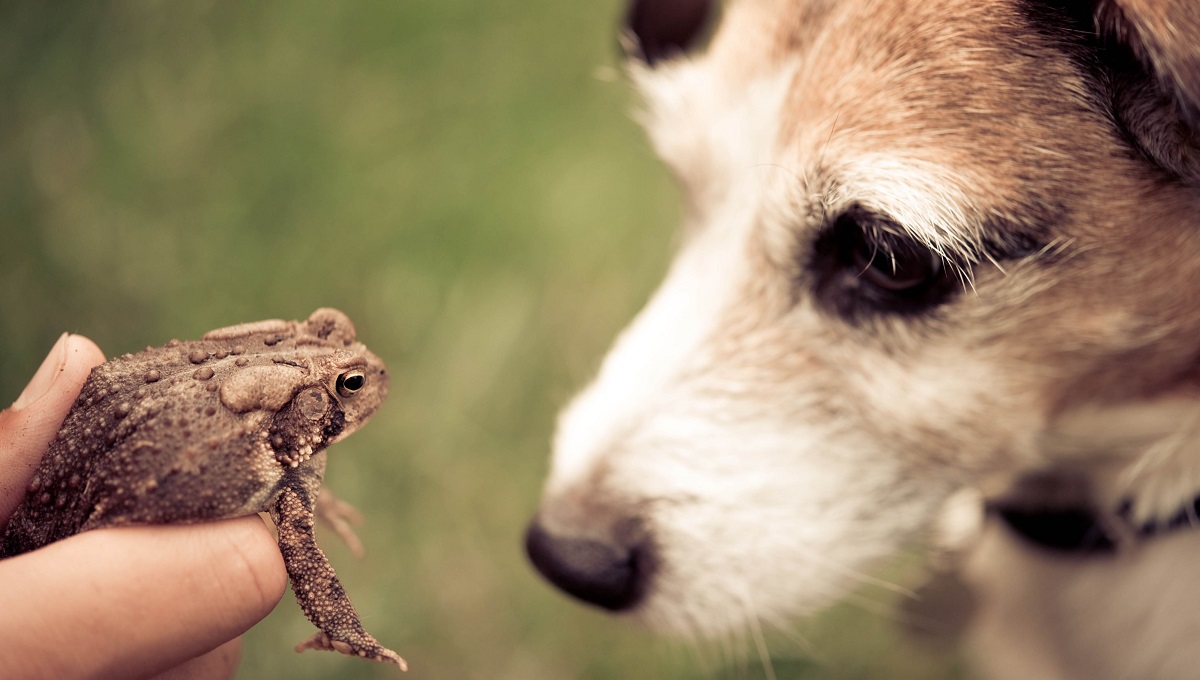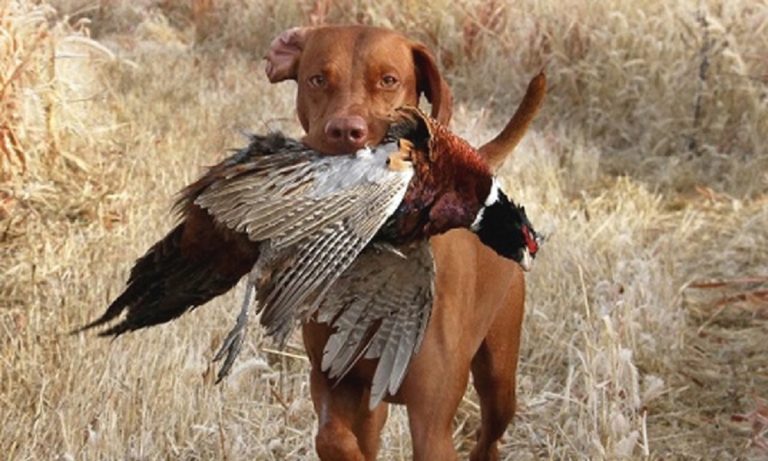Are Frogs Poisonous to Dogs?
Some frogs secrete toxins that can be poisonous to dogs if ingested. Immediate veterinary care is crucial if a dog interacts with a toxic frog. Dogs often explore the world with their mouths, which can lead them into trouble when encountering frogs.
Despite the curiosity-driven nature of our canine friends, not all frogs pose a threat. The toxicity varies among different frog species. Certain types, such as the Colorado River toad and the cane toad, release potent toxins that are harmful to pets.
Symptoms of frog poisoning range from drooling and pawing at the mouth to more severe signs like convulsions. Dog owners must remain vigilant, particularly in areas where these amphibians are common.
Quick action and awareness can prevent tragic incidents, ensuring the safety of our beloved pets. If your dog exhibits any unusual behavior after an amphibian encounter, seek veterinary assistance promptly.
Types Of Toxic Frogs
When it comes to our canine companions, not all frogs are friendly. Some pack a toxic punch that can be harmful, or even fatal, to dogs.
Knowing which frogs pose a threat is crucial for dog owners, especially those living in areas where these amphibians are common.
Identifying Toxic Frog Species
Dogs love to chase and sometimes taste frogs, but certain species can turn this play into peril. Below, learn to recognize some toxic frogs:
- American Toad: Dark, warty skin with a light stripe down the back.
- Cane Toad: Large, brown to grayish toads with dry skin.
- Colorado River Toad: Olive green or dark brown, with a bumpy texture.
Check for bright colors as well. Brightly colored skin is a frog’s way of saying “I’m dangerous!”
Geographical Distribution
Certain toxic frogs are found in specific regions. Knowing where they live helps protect dogs:
| Frog Species | Areas Found |
|---|---|
| American Toad | Eastern United States |
| Cane Toad | Florida, Hawaii, and other warm regions |
| Colorado River Toad | Southwestern United States |
Bold, bright skin often means a frog is venomous. Keep dogs away from suspicious amphibians, and stay safe.
Symptoms Of Frog Poisoning
Understanding the symptoms of frog poisoning is crucial for dog owners. While not all frogs are toxic, certain species can pose serious health risks to our canine friends.
Quick identification of the signs can lead to prompt treatment and a better outlook for your pet.
Ingestion Symptoms
When a dog ingests a poisonous frog, the symptoms can be immediate and alarming. Owners should watch for the following:
- Vomiting: Dogs often try to get rid of the toxin by throwing up.
- Diarrhea: An upset stomach may lead to frequent, watery bowel movements.
- Excessive drooling: A signal that the mouth tissues are irritated.
- Dilated pupils: A sign of neurological impact from the toxins.
- Disorientation: A dog may seem confused or unsteady on its feet.
- Abnormal heart rate: Too fast or too slow beats indicate distress.
- Seizures: In severe cases, convulsions can occur.
Contact Symptoms
Direct skin contact with a toxic frog can also affect a dog. Key contact symptoms include:
- Excessive pawing: At the mouth or face due to irritation.
- Facial swelling: This may happen around the eyes or mouth.
- Red and inflamed skin: Especially in areas the frog touched.
- Difficulty breathing: A severe reaction may lead to respiratory distress.
- Behavioral changes: Unusual agitation or lethargy.
Treatment And Prevention
Dogs are curious creatures, often putting their noses where they shouldn’t. Sometimes, that can lead them to encounter a frog. Not all frogs are a danger, but some secrete toxins that could harm your pet.
In this section, we will explore what to do if a dog does come into contact with a poisonous frog, focusing on immediate treatment options and long-term preventive measures to keep your furry friend safe.
Treatment Options
If your dog interacts with a frog, quick action is vital. Firstly, remove the frog safely and keep it for identification. Next, rinse your dog’s mouth with water, flowing outward, to reduce toxin absorption.
Note any symptoms like drooling, weakness, or vomiting. These require prompt vet care. The vet might administer medications to counteract the toxins, offer supportive care, or in severe cases, hospitalization could be necessary.
Preventive Measures
Prevention is the best way to protect your dog. Start by educating yourself about local frog species. Keep your garden free of standing water, as it attracts frogs.
During walks, keep your dog on a leash, especially at night when frogs are active.
- Supervise outdoor time to watch your dog’s interactions.
- Train your dog to come when called, a useful command if they spot a frog.
- Use environmentally safe repellents to discourage frogs from entering your yard.
In areas with many frogs, consider designing landscapes that are less appealing to them. This could include choosing plants that don’t attract insects, frogs’ primary food source.
Remember, keeping your dog’s environment frog-free is an ongoing process.
What To Do If Your Dog Is Poisoned
Discovering that your loyal companion may have been poisoned by a frog can be alarming. Not all frogs are dangerous, but some secrete toxins that are harmful to dogs.
Quick and appropriate actions are crucial to ensure the safety and well-being of your furry friend. Follow these steps to manage a potential poisoning situation effectively.
Immediate Actions
Identify the frog if possible and restrict your dog’s movements to prevent further exposure. Acting swiftly is key. Here’s what you need to do right away:
- Remove any frog remnants from your dog’s mouth with a cloth.
- Rinse your dog’s mouth gently with water to clear residual toxins.
- Keep your dog calm and still to slow the spread of poison.
Seeking Veterinary Care
After the immediate steps, seek professional help without delay. Even with these early measures, veterinary intervention is often necessary. Here’s how to proceed:
- Call your veterinarian or a poison control hotline.
- Provide clear details: the type of frog, symptoms observed, and first aid administered.
- Transport your dog carefully to the vet with any relevant information.
Always keep emergency contact numbers handy. Time is of the essence in poisoning incidents. The sooner you act, the better your dog’s chances for a speedy and full recovery.
Conclusion
To wrap up, dogs can indeed suffer harm from certain frog species. It’s essential to stay vigilant and prevent your furry friends from interacting with these amphibians.
Quick action and veterinary care are crucial if exposure occurs. Protect your pet’s health by staying informed and proactive against these potential dangers.
Frequently Asked Questions
What Happens If A Dog Licks A Frog?
If a dog licks a frog, it may experience symptoms like drooling, vomiting, or difficulty breathing due to potential toxins. Immediate veterinary care is crucial.
What Happens If A Dog Eats A Frog?
If a dog eats a frog, it may experience vomiting, diarrhea, or mouth irritation. Immediate veterinarian attention is advisable to prevent toxin-related complications. Keep dogs supervised outdoors to avoid such incidents.
Are Backyard Toads Poisonous?
Backyard toads can secrete toxins as a defense, which may be harmful if ingested or if they come in contact with mucous membranes. It’s vital to handle them with care and wash hands thoroughly after.
Can Tree Frogs Make Dogs Sick?
Tree frogs can carry parasites and bacteria, such as salmonella, that may cause illness in dogs if ingested. Always supervise your pets outdoors to prevent them from eating frogs.
Can Dogs Get Sick From Frogs?
Yes, certain frogs secrete toxins that can cause sickness in dogs if they mouth or ingest them.




